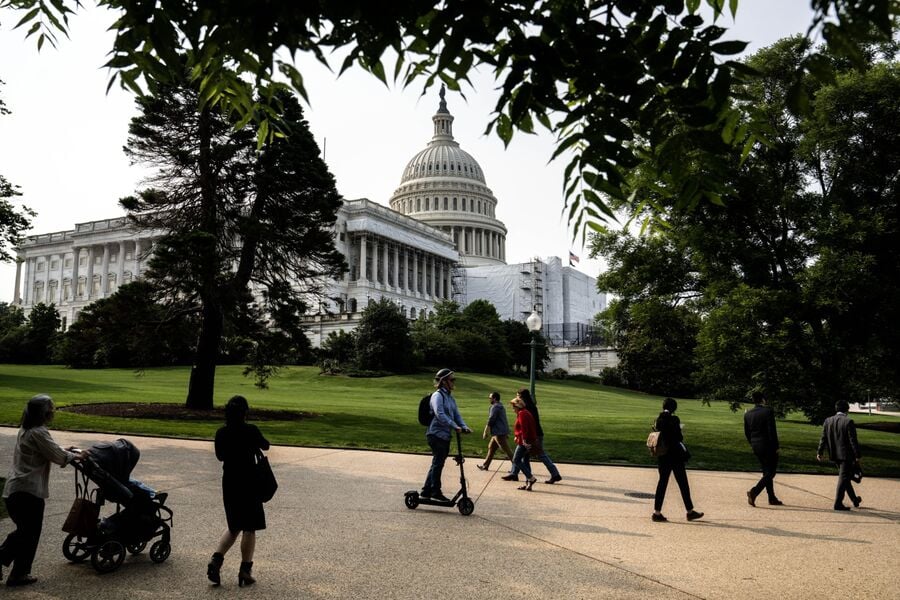

There’s a roughly one-in-four chance that the United States will hit the so-called X-date — at which the U.S. government runs out of cash — without a deal to raise the debt limit, and the odds are getting worse, according to JPMorgan Chase & Co.
“We still think the most likely outcome is a deal signed into law before the X-date, though we see the odds of passing that date without an increase in the ceiling at around 25% and rising,” JPMorgan chief U.S. economist Michael Feroli said Wednesday in a note to clients.
“In this latter scenario, we think there is a very high likelihood Treasury would prioritize principal and interest payments,” he wrote. “While doing so would avoid a technical default, there would still be several adverse effects, including a likely downgrade of the U.S. credit rating.”
A potential deal including cuts to federal government spending could reduce U.S. gross domestic product by 0.1% to 0.5% in 2024, depending on the details, JPMorgan's Feroli said.
According to a popular economic model for monetary policy known as the Taylor rule, that would suggest the Federal Reserve needs to make one fewer quarter-point interest-rate hike in order to bring inflation down, he said.

The leadership changes coming in June, which also include wealth management and digital unit heads, come as the firm pushes to offer more comprehensive services.

Strategist sees relatively little risk of the university losing its tax-exempt status, which could pose opportunity for investors with a "longer time horizon."

As the next generation of investors take their turn, advisors have to strike a fine balance between embracing new technology and building human connections.

IFG works with 550 producing advisors and generates about $325 million in annual revenue, said Dave Fischer, the company's co-founder and chief marketing officer.

Five new RIAs are joining the industry coalition promoting firm-level impact across workforce, client, community and environmental goals.
RIAs face rising regulatory pressure in 2025. Forward-looking firms are responding with embedded technology, not more paperwork.
As inheritances are set to reshape client portfolios and next-gen heirs demand digital-first experiences, firms are retooling their wealth tech stacks and succession models in real time.
